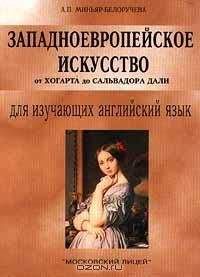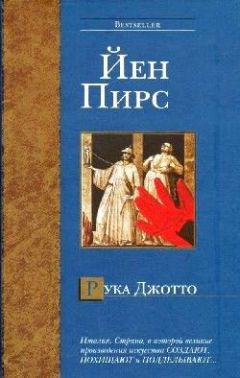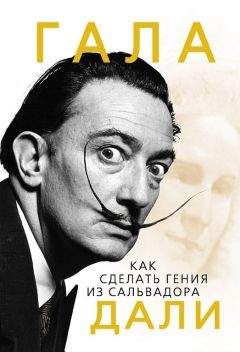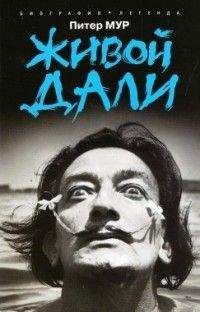In 1855 Courbet's paintings were rejected by the Universal Exposition. These works included the Burial and a more recent programme work The Studio: A Real Allegory Concerning Seven Years of My Artistic Life, painted in 1854-55. A special shed for a large exhibition of Courbet's paintings, including the rejected works was constructed. The artist called this building The Pavilion of Realism. For the catalogue he wrote a preface setting forth the principles of his art. In The Studio the relationship between artist and sitters as seen by Velazquez and Goya is exactly reversed Instead of playing a subsidiary role at one side, the artist displays himself in the centre, at work on a completely visible landscape, similar to those that adorn the walls of the dim studio. A model who has just shed her clothes, probably representing Truth Iooks on approvingly, her figure is beautifully revealed in light. The group at the left remains obscure, but it comprises figures drawn from «society at its best, its worst, and its average," with whom the painter had come into contact. Few of the figures look at the artist; all are silent. Delacroix called the picture a masterpiece, reproaching the jury for having «refused one of the most remarkable works of our times.»
When Courbet reached material success, something of the rude power of his early works vanished from his portraits of the French aristocracy.
After the revolution of 1870 Courbet joined the short-lived Paris Commune, and took part in the commission that decreed the dismantling of the Colonne Vendome. For this he was sentenced under the Third Republic to six months in prison, which he spent in painting still lifes of extraordinary clarity and simplicity and landscapes from photographs. Later he was charged a huge sum for rebuilding the monument, fled to Switzerland, and died in exile, his belongings were sold by the authorities to pay the debt.
Make sure you know how to pronounce the following words:
Courbet; Paris Commune; Switzerland; Ornans; mountainous: subsidiary; pavilion; exile; France; obscure; escarpment; extraordinary; catalogue; amateur; requirements; dehumanising; region
NotesThe Stone Breakers – «Каменотесы»
A Burial at Ornans – «Похороны в Орнане»
The Studio: A Real Allegory Concerning Seven Years of My Artistic Life – «Ателье: реальная аллегория, определяющая семилетний период моей художественной жизни»
The Pavilion of Realism – «Павильон реализма»
The Universal Exposition – Всемирная выставка
Office for the Dead – заупокойная служба
TasksI. Read the text. Make sure you understand it. Mark the following statements true or false.
1. Courbet favoured Neo-classicism.
2. Courbet's art embodied the High Renaissance ideals.
3. Courbet's pictures dealt with historical events.
4. Goya had a strong impact on Courbet's works of art.
5. A special shed for a large exhibition of Courbet's paintings was called The Pavilion of Realism.
6. Courbet set forth the principles of his art in a special monograph.
II. How well have you read? Can you answer the following questions?
1. How was Gustav Courbet characterised? What did he determine to create when he came to Paris? What were Courbet's ideas concerning art? What paintings did the Parisian public favour at that time?
2. What subjects did Courbet prefer to paint? Did the public understand The Stone Breakers. What is depicted in this painting? What does its objectivity betray? What methods did Courbet use to achieve the effect? How did Proudhon call this work of art?
3. What Courbet's work of art fulfilled his requirements for true history painting? What does it represent? What does the arrangement of the figures recall? What did Courbet want to express by placing the figures within these landscape limits? How did Courbet paint the faces? What makes this canvas one of the strongest and noblest works of all French painting?
4. What happened in 1855? What is depicted in The Studio Why did Courbet show the relationship between the artist and the sitters in such an unconventional way? What does the nude model symbolise? How did Courbet group the figures? What did Delacroix say about this painting?
5. What did Courbet do during and after the revolution of 1870? Why was Courbet imprisoned? What did Courbet do when he was in prison?
6. What happened to Courbet later in life?
III. i. Give Russian equivalents of tlie following phrases:
to remain obscure; the representation of objects; a champion of working-class rights; to embody the ideas; to reject history painting; the paintings are concerned with events of; to practise as an amateur; dehumanising labour; to lay paint on with a palette knife; the inescapable end; an ordinary inhabitant; altar boys; pallbearers; the parish priest; simple dignity; sculptural density recalling the prophets; in exile; the rocky escarpment; a parable from the Gospels.
ii. Give English equivalents of the following phrases:
оставаться в тени; отвергать историческую живопись; изложить принципы реализма; скалистая стена; в ссылке; скульптурная масса, напоминающая пророков; неизбежный конец; приходской священник; евангельская притча; защитник прав рабочего класса; простой деревенский житель; изображение предметов; поддерживающий концы покрова (на похоронной процессии); мальчик, прислуживающий в алтаре; наносить краску шпателем; воплотить идеалы реализма.
iii. Make up sentences of your own with the given phrases.
iv. Arrange the following in the pairs of synonyms:
a) escarpment; extraordinary; amateur; betray; destiny; to decree; dismantle;
b) non-professional; fate; exceptional; wall; reveal; break down; to announce.
IV. Here are descriptions of some of Courbet's works of art. Match them up to the titles given below.
1. The artist placed himself in the centre, at work on a completely visible landscape.
2. The inescapable end of an ordinary inhabitant of the village is represented with sober realism.
3. The simplicity of this relief-like composition is deeply classical.
a. The Stone Breakers
b. The Studio: A Real Allegory Concerning Seven Years of My Artistic Life
c. A Burial at Ornans
V. Translate the text into English.
Становление критического реализма связано с именем Гюстава Курбе. Он приехал в Париж в 1840, чтобы «завоевать его». В 1842 г. художник дебютировал в Салоне. Курбе обращался к темам труда и нищеты. В картине «Каменотесы» выражено сочувствие к доле смирившихся со своей судьбой людей.
Во время революции 1848 г. Курбе подружился с некоторыми будущими участниками Парижской Коммуны. После разгрома революции Курбе уехал в родные места, в Орнан, где создал прекрасные живописные произведения.
Самая крупная работа Курбе – «Похороны в Орнане» Это монументальное произведение на современный сюжет. Курбе передал типичное через индивидуальное. Картина «Похороны в Орнане» считается одним из лучших произведений классического европейского искусства.
В 1855 г., когда Курбе не был принят на Всемирную выставку, он открыл свою экспозицию в деревянном бараке, названном «Павильоном Реализма» и предпослал ей каталог, в котором изложил свои принципы реализма. Декларация Курбе вошла в искусство как программа реализма. В этом же году Курбе создал программное произведение «Ателье», посвященное проблеме места художника в обществе.
Курбе принимал активное участие в Парижской Коммуне. Последние годы художник жил в изгнании, в Швейцарии.
VI. Summarize the text.
VII. Topics for discussion.
1. Realism in art.
2. Courbet's mode of life and work.
3. Courbet's revolutionary art.
Unit X Manet (1823 -1883)
Edouard Manet came from a well-to-do Parisian family. The young Manet was trained for a naval career, but then permitted to enter the studio of the conservative painter Thomas Couture, where he received thorough training. Trips to Italy, the Netherlands, Germany and Austria in the 1850s brought him into contact with the work of the Old Masters, through careful coping. He was particularly impressed by the optical art and brilliant brushwork of Velazquez, whose work he saw during a brief visit to Spain in 1865. He also admired Goya and Courbet.
In 1863 Manet exhibited at the Salon des Refuses a canvas entitled Luncheon on the Grass which created an uproar. The grouping of a nude female figure and two fully clothed men in a public park shocked the Parisians as flagrant immorality. In actuality Manet had wittily adapted the composition and the poses from a sixteenth century engraving after a design by Raphael. Manet simply modernised the clothing, surroundings and accessories. Courbet found the painting formless and flat. This flatness was just what Manet was striving for. Illumination seems to come from the direction of the observer, and eliminates mass. By this painting Manet pointed out his belief that the important thing about a picture is not what it represents but how it is painted. The erasure of form allows him to concentrate on the luminosity of the green grass and foliage, the sparkling remains of the picnic, and the glowing flesh of the nude. By posing an insoluble enigma of subject, he has transformed a group of figures into a still life.
Manet soon went even further; in 1867 he painted a subject from contemporary history, the Execution of the Emperor Maximilian of Mexico, which records an event that had deeply shocked the French public and for which Napoleon III and his government, who had installed Maximilian, were blamed. Manet treated the incident in a totally unexpected way, almost as a reaction against such an elaborately staged protest composition as Goya's «Third of May, 1808». Manet made a close study of newspaper accounts and photographs of the execution, and even of portrait photographs of the slain emperor, but instead of arranging the figures for maximum emotional effect he has taken a snapshot of the scene. It is impossible to make out the expressions of the doomed men. Only the officer preparing his rifle for the coup de grace receives special attention. The onlookers peering over the wall are merely curious. The picture consists of coloured uniforms, a briskly painted background, and puffs of smoke. Another traditional subject, this time a tragic one, has been modernised in terms of immediate vision.
In the early 1870s Manet gave up his flat style and adopted the brilliant palette and the broken brushwork of the Impressionists. Some of his later pictures are indistinguishable from theirs. The most memorable of these, A Bar at the Folie-Bergere, painted in 1881-82, only two years before the artist's premature death, is a brilliant restatement of Manet's earlier interest in the human figure.
The entire foreground is constituted by the marble bar, laden with fruit, flowers and bottles of champagne and liqueurs. The nearer edge of the bar is cut off by the frame and we have the illusion that its surface extends into our space and that we as spectators are ordering a drink from the solid barmaid who leans her hands on the inner edge. This illusion is reinforced by the reflection in the mirror, which fills the entire background of the picture. We can make out clearly a back view of the barmaid, in conversation with a top-hatted gentleman. Manet certainly remembered Velazquez's Las Meninas, in whose background mirror appear the king and the queen. Manet's extension of the mirror beyond the frame at the top and sides substitutes for the expected space within the picture the reflected interior of the cabaret, which is behind the spectator and, therefore, outside the picture. This is the most complex image in the history of art. In his early works Manet had modernised the subject. In this picture Manet eliminated the Renaissance pictorial space (a vertical section through the pyramid of sight). Manet's masterpiece is painted with a brushwork that combines memories of Velazquez's virtuosity with the most briliant achievements of the Impressionists. The imposing dignity of the figure and the straight lines of the bar and the crowded balcony make this work his most monumental accomplishment.
Make sure you know how to pronounce thefollowing words:
Edouard Manet; Velazquez; Parisian; Austria; Folie-Bergere flagrant; Raphael; erasure; Napoleon; Mexico; Maximilian; luminosity; insoluble
NotesLuncheon on the Grass – «Завтрак на траве»
A Bar at the Folie-Bergere – «Бар «Фоли – Бержер»
Execution of the Emperor Maximilian of Mexico – «Казнь императора Мексики Максимилиана»
Salon des Refuses – «Салон отверженных»
TasksI. Read the text. Make sure you understand it. Mark the following statements true or false.
1. Manet was the founder of Impressionism.
2. Manet admired Giotto, Ingres and Delacroix.
3. In the Luncheon on the Grass Manet was striving to produce three-dimensional forms on a flat surface.
4. Courbet liked the Luncheon on the Grass. 4. Manet never painted subjects from contemporary history. 6. A Bar at the Folie-Bergere is a brilliant restatement of Manet's earlier interest in the human figure.





